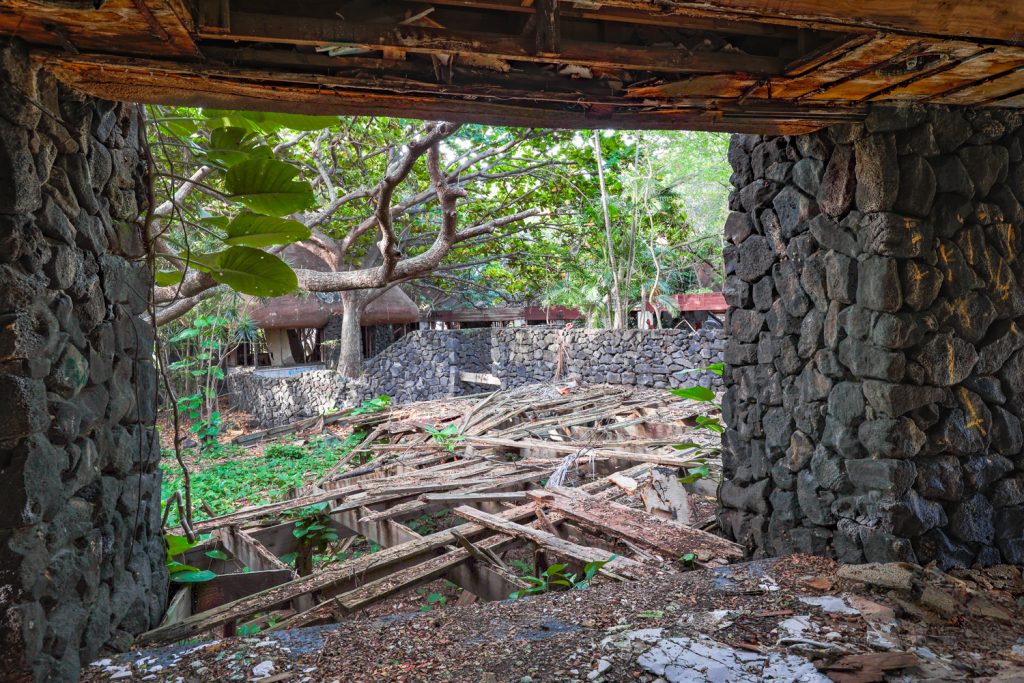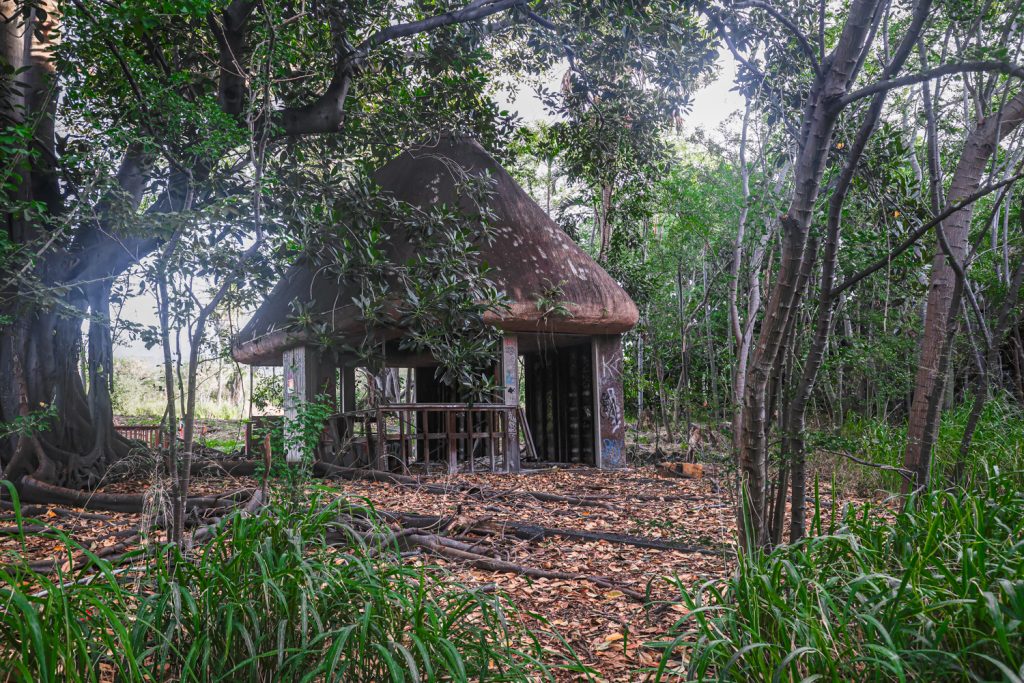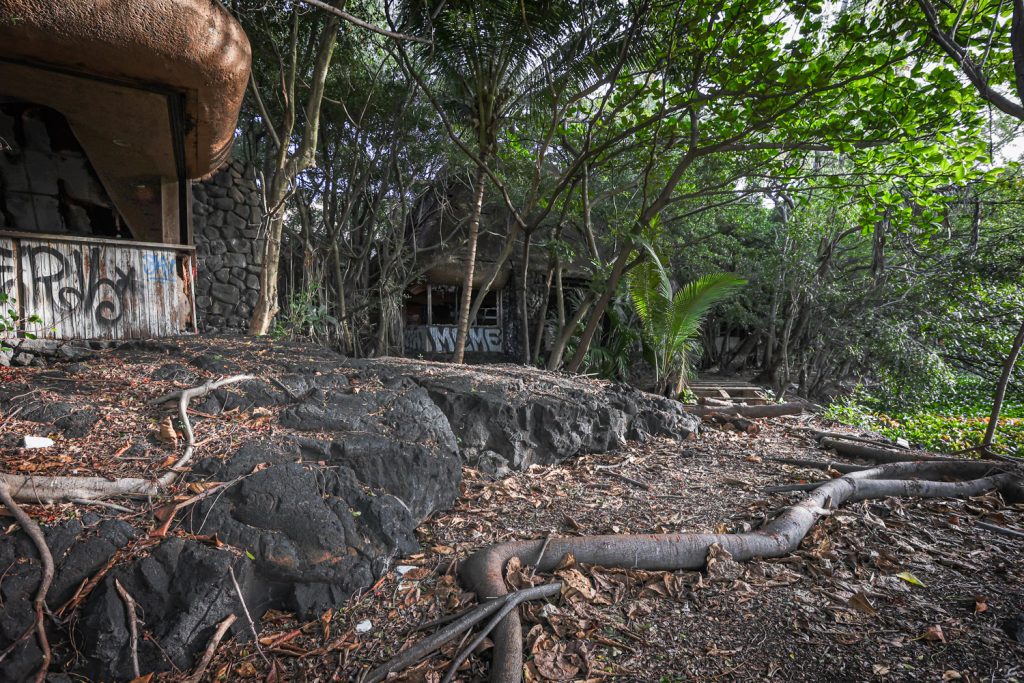Punalu’u Village

With a prime location on a Hawaiian black sand beach, the Punalu’u Village Restaurant and Ka’u Center of History and Culture deteriorates into the elements.
Historically the land on the southeastern coast of Hawaii’s Big Island was that of the Ka’u Kingdom. In the late 1800’s, this area was connected to other parts of Hawaii by commercial shipping, allowing the land to build a large economy based around sugar plantations.
Prior to the completion of the island’s first railroad in 1878, which connected the village of Punalu’u in the Ka’u District to the town of Keaiwa, Punalu’u harbor and landing would be the primary access used by these communities. Punalu’u, a black sand beach, made a natural spot for a landing for the steamer ships that transported people and goods as it was one of the few sandy beaches on an otherwise unforgiving coastline shaped by volcanic activity of Mauna Loa.
In 1910, one of the main sugar plantations would be purchased by the C. Brewer & Co. who would run the plantation and much of the local community constructed around housing workers until the sugar industry in this area would close for good in the late 1900’s.

In the 1970’s, the Brewer Company – one of the five largest landowners in Haawii – would begin work on a resort beside the beach. Seeking to build in land just above a freshwater lagoon that once served as a royal fishpond, the Brewer Company ran into opposition from the community regarding developing the area, with community members citing the sacred history of the grounds.
The ponds were a natural habitat that only exists in the United States on Hawaiian islands, with brackish water filling and moving through collapsed lava tubes, and connected to the sea through tunnels and cracks in the rocks.

The development would open in 1972 as the Punalu’u Village Restaurant and Ka’u Center of History and Culture. The property fronted a series of walking paths with wooden bridges the crossed the lagoon and connected the buildings to the black sand beach. The beach was already an attraction for tourists, known for its snorkeling and sea turtles who can often be seen swimming in the cove and laying in the sand. A gift shop, interpretive signage, and spacious restaurant with artworks by well known Hawaiian artists stood throughout the property. Plans were in the works to develop hotel rooms. However much of this changed just three years after it opened…

On November 29th of 1975, an earthquake struck off the coast of Hawaii. Locals along this section of coast reported hearing rocks tumbling from cliffs as a result of the shaking. In less than 2 minutes, waves measuring about 5′ rolled against the shore. However it was a second quake that same evening that would send 26′ waves against the Big Island coast, washing some Punalu’u homes from the their foundations. The incoming waves put flooded the restaurant, leaving a layer of mud when it eventually retreated.

























 Dining room
Dining room




kpam8l
end03g
3h500s